There are three variations of the minor scale: the natural minor, harmonic minor, and melodic minor. For this post, we will focus on the E Natural Minor Scale, but you can explore the E Harmonic Minor and E Melodic Minor in our other articles.
Contents
HOW TO CREATE THE E NATURAL MINOR SCALE
The E Minor scale consists of seven notes, namely E, F#, G, A, B, C, D. It is typically notated as commencing and concluding on E, and it can be repeated at higher or lower octaves. It belongs to a key, which is E Minor in this case, and is classified as a diatonic scale
Every Natural Minor scale has a specific sequence of tones and semitones (also known as steps and half steps). This sequence consists of a particular pattern of tones and semitones.
The sequence is as follows: Tone, Semitone, Tone, Tone, Semitone, Tone, Tone.
If we begin with the note C and follow this pattern, we will obtain the C Natural Minor Scale. To generate the E Natural Minor scale, trace the tone/semitone pattern starting from the note E.
Regardless of the starting note, you will always arrive at the minor scale for that particular note.

E NATURAL MINOR SCALE ON THE PIANO
As you can see, if we were to play this scale on the piano diagram we only use the white keys.

To play this scale on the piano use the fingers written below.

E NATURAL MINOR SCALE ON THE GUITAR
You can use the tab below to play the E Natural Minor scale on the guitar
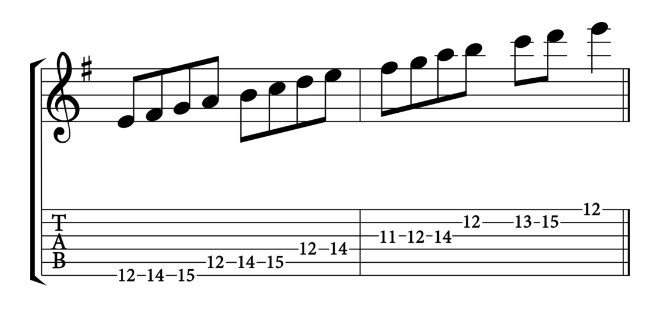
DEGREES OF THE SCALE: E MINOR
Every note within the E Minor scale is assigned a specific position known as its degree within the scale. The initial note of the scale is referred to as the “tonic” note.

KEY SIGNATURE FOR E MINOR
Instead of notating the sharp signs on each note, we can utilize the key signature. E Minor is considered the relative minor of G Major. This is evident since E is the sixth note in the G Major scale. As a result, they both have the same key signature, which includes one sharp, F#.
Here is the full scale written out with the key signature.

E MINOR SCALE IN DIFFERENT CLEFS
Treble Clef
Below is the E Natural Minor Scale written out in the treble clef, both ascending and descending.
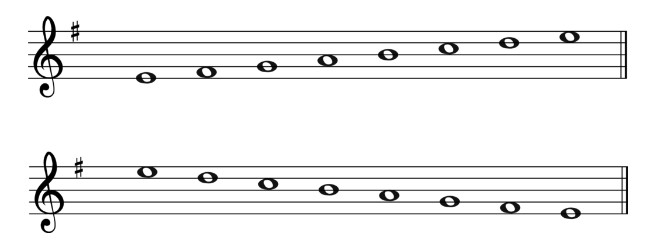
Bass Clef
Below is the E Natural Minor Scale written out in the bass clef, both ascending and descending.
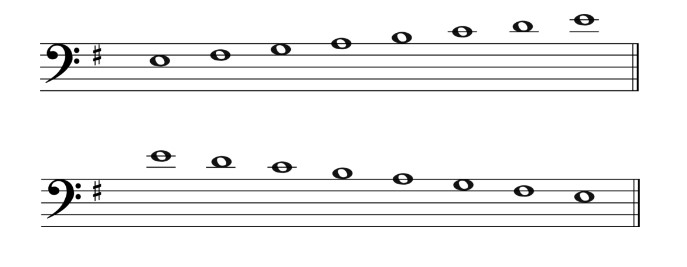
Alto Clef
Below is the E Natural Minor Scale written out in the alto clef, both ascending and descending.
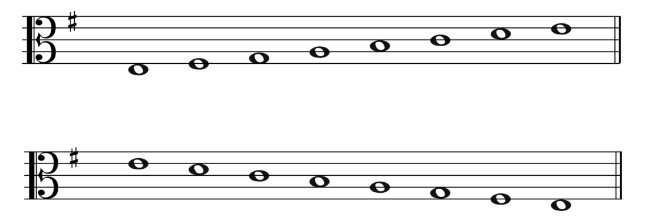
Tenor Clef
Below is the E Natural Minor Scale written out in the tenor clef, both ascending and descending.
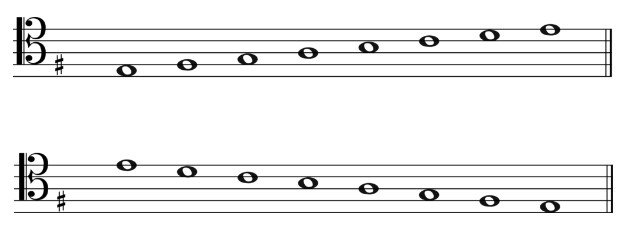
When we describe a piece of music as being in the key of E Minor, it implies several things.
- Firstly, the key signature will comprise of one sharp (F#) and the relative major will be G major.
- Secondly, the note E natural will serve as the tonic (or root note) of the piece, providing the most stable sound throughout the composition.
- Thirdly, the piece will predominantly use notes from this specific scale, which could be in any octave.
- Lastly, the chords used will be those that belong to E Minor.
If you’re interested in learning more about music scales, chords, and musical theory, visit our Guitar tunio today
